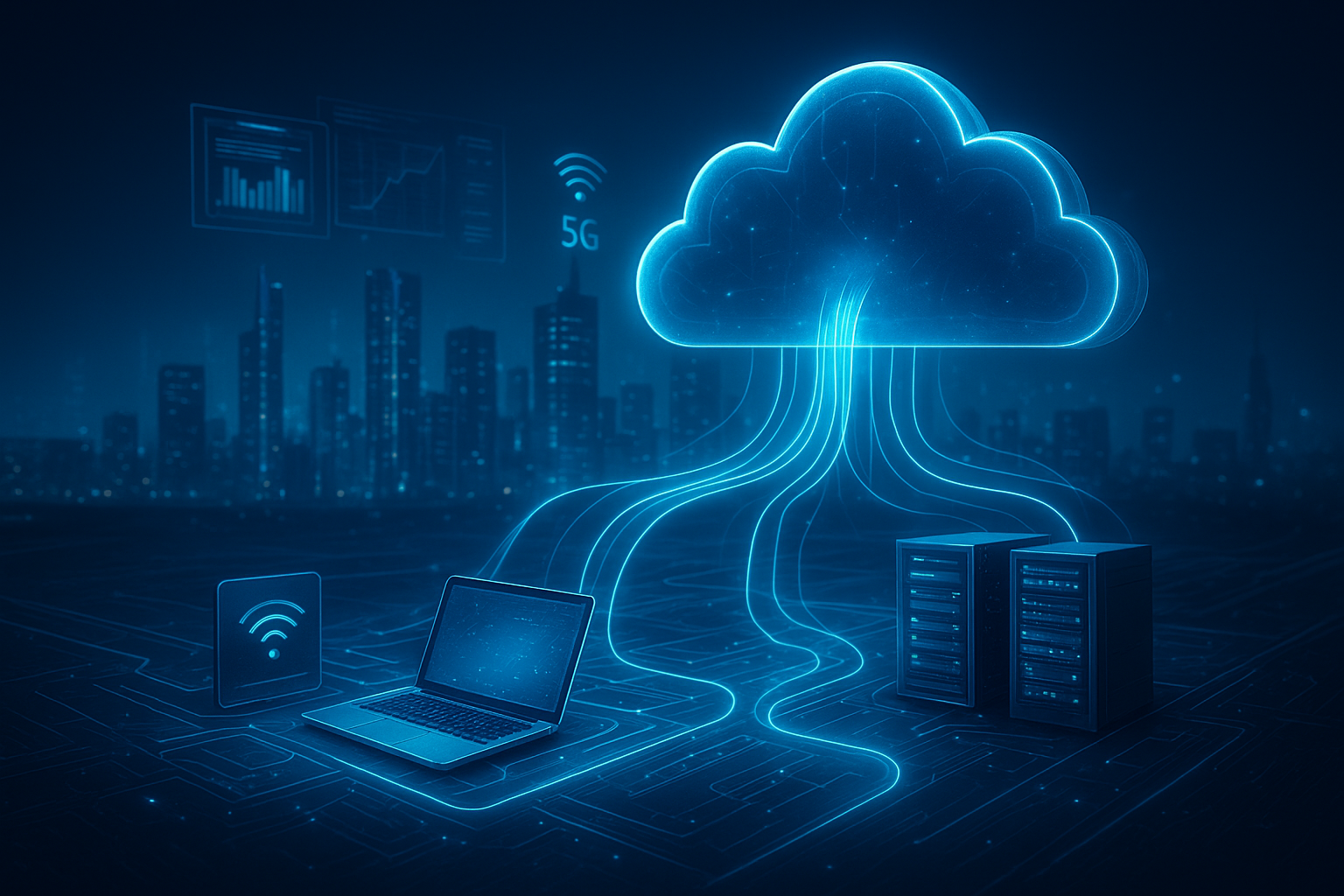🔍 What Is Edge-to-Cloud Architecture?
Edge-to-cloud architecture refers to the utilization of both edge and cloud computing in one system.
With edge computing, data is processed near its point of origin, that is, directly on your mobile device, an IoT gadget, or a local server.
Cloud computing, on the other hand, is a method of processing and storing data on remote servers (for example, AWS, Google Cloud, or Azure).
By merging the two solutions, companies have the option of processing the most vital data right there at the edge where it is faster while they can still use cloud for storage, analysis, and AI.
Such an approach upgrades software systems by making them faster, smarter, and more reliable.
⚙️ How Does It Work?
We can break it down into simple steps:
- Firstly, data is generated by various devices — e.g. sensors in a factory or cameras in a smart city.
- Quick decisions are made by the edge — for example, identifying a fault or changing the operation of a machine.
- The cloud gets access to the brief version of the data for saving, analyzing, or AI model training purposes.
Looking ahead, cloud can also send the command to the edge for more intelligent actions next time.
👉 Briefly: The edge is responsible for speed, whereas the cloud is for power. By working together, they form an intelligent and efficient system.
🚀 Reasons to Use Edge-to-Cloud in 2025
By 2025, nearly everything — from mobile phones to vehicles — will be internet-connected.
As a result, there will be a demand for faster and more secure data processing methods.
Edge-to-cloud technology offers the following solutions to this problem:
- ⚡ Speed: The decisions are made instantly locally without waiting for cloud communication.
- 💰 Cost savings: Major data is the only one that is sent to the cloud, which lowers the bandwidth expenses.
- 🔒 Better security: The most sensitive data can always be kept in the local environment, thus ensuring security.
- 🌍 Scalability: The cloud is always there to meet the immense storage and analytics demands.
- 🤖 AI readiness: Edge units are capable of performing AI tasks while the cloud keeps upgrading the models.
This integration is fueling the smart industries, driverless vehicles, and IoT networks all over the planet.
🏭 Edge-to-Cloud Real Life Use Cases
- Healthcare:
Health Monitoring Devices are continuously monitoring the patient and in case of a sudden event, the alert is sent immediately. Later, the data is examined in the cloud for deriving medical insights.
- Manufacturing:
Machines Locally Detect Their Fault Using Data from Sensors, On the Other Hand, The Cloud Analyzes Overall Production Performance.
- Retail:
Edge cameras record customer movements in stores; utilizing that data the cloud comes up with strategies for marketing.
- Transportation:
Autonomous vehicles leverage data at the edge for navigation purposes and use cloud-based services for map updates and route learning.
- Smart Cities:
Traffic lights, waste systems, and sensors run locally while the city’s data is stored and analyzed in the cloud for planning.
💡 Benefits Businesses Can Get
Employing edge-to-cloud software is a great way for businesses to gain:
- Performance and decision-making that are quicker
- Reduced internet and storage costs
- Through fast responses customers get a better experience
- Systems that are reliable even if the internet is weak
- Easy adoption of AI and IoT technologies
Basically, it is making technology more intelligent, faster, and efficient.
⚠️ Challenges to Consider
Though powerful, edge-to-cloud systems also face some issues:
- Handling both edge and cloud systems simultaneously might be quite difficult.
- It is very important to maintain tight security at both ends.
- Proper planning is necessary when it comes to syncing and updating data between edge and cloud.
Nevertheless, there are new developer tools such as Kubernetes, Docker, and 5G networks that are easing this task significantly.
🔮 Future of Edge-to-Cloud
Eventually, edge-to-cloud will be the default setup of most industries in the near future.
In fact, it would be the backbone of everything ranging from smart homes and self-driving cars to AI-enabled factories.
With ever-increasing data, this very organization will enable companies to make faster and smarter decisions, thus giving them a true competitive advantage.
📈 Conclusion
The next generation of software is not only in the cloud anymore, but also at the edge.
Such a business model whereby data are processed locally and the cloud is used for heavy analysis brings speed, security, and efficiency to enterprises simultaneously.
The implementation of edge-to-cloud software architectures will be the hallmark of digital transformation leadership in 2025. The resultant systems will be not only smarter but also more environmentally-friendly and better interconnected than ever before.
